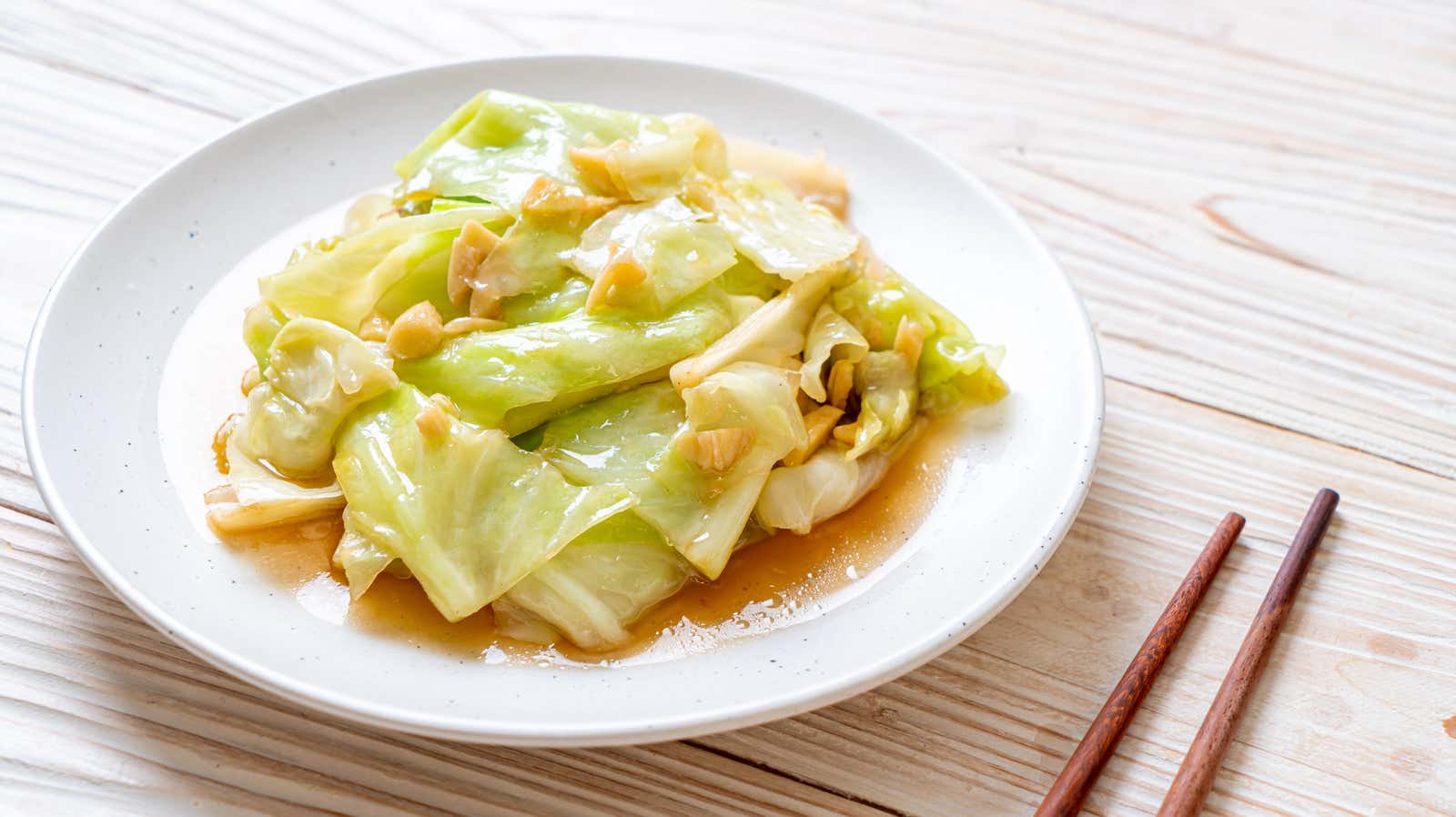Impress Yourself With This Simple Four-Ingredient Thai Dish

If you’ve ever come home hungry to a refrigerator filled with nothing but scattered vegetables and a spice door, you can understand the emotional breakdown I had recently after a recent vacation. Exhausted from the flight and hungry, I almost burst into tears when I opened the refrigerator. Inside was a lone cabbage, a tumbleweed. Luckily, when you’re making a hearty plate of galam bplee pad nam bpla, that lone cabbage is just about everything.
Galam bplee pad nam pbla (written as กะหล่ำปลีผัดนำ้ปลา in Thai) is a Thai dish that is fried cabbage with fish sauce and lots of garlic. It’s super quick to make and honestly, just as easy as it sounds. No preparation is needed other than to chop a few cabbage leaves and remove the paper from the garlic cloves . Unlike many Thai dishes, which can have up to 12 ingredients in a recipe, this recipe only requires four (and one of them is cooking oil). You don’t have to be particularly skilled at cooking or even with a knife—everything is roughly chopped or smashed. It is also versatile. Make a bowl out of it to dine alone on your porch or as a side dish to impress your Thai father-in-law coming to your Thanksgiving multi-course dinner.
Cooking fast and easy
To prepare this delicious garlic dish, chop the cabbage leaves. For two servings, use about half a head of cabbage, or about three cups of chopped cabbage pieces. I do this by pulling off seven or eight leaves (don’t use the outermost or damaged leaves, they can be thrown away) and cut off about 1.5 cm of the thick end of the stem. If the cabbage ribs are thin, just cut them widthwise into 2-inch pieces. If the rib is thick, cut the leaves down the middle of the rib and then cut across the width. Depending on the type of cabbage you are using, you may not need to separate the ribs. Napa cabbage, or Chinese cabbage, has a tender rib, but the round green and white version can be tough.
After the cabbage is chopped, prepare the garlic by crushing it well with the side of a knife or the palm of your hand. This method does double duty: the garlic paper peels off easily, and since you won’t cut or mince them in any way, they’re already broken up and ready to fry. Preparation done.
From now on, cooking takes place in the blink of an eye. Set the heat to medium and add a tablespoon of canola oil (or any neutral flavored oil that has a high smoke point ). Don’t wait for the oil to heat up, just add crushed garlic cloves and cook for a few minutes. When the garlic begins to color around the edges, add the cabbage and raise the heat to high. Toss and toss the leaves and garlic, allowing everything to coat evenly with oil as it sizzles and wilts. Once the cabbage is mostly soft, but not quite soft, add the fish sauce and continue stirring for another minute. Turn off the fire and serve.
The finished dish has a salty fish sauce umami punch quickly followed by a persistent mild garlic aftertaste. The cabbage hopefully gets a bit smoky, or wok-hey , and serves more as a canvas to bring all those flavors to your mouth with an added crunch. I am known to eat it as is, but my favorite way is next to a mound of steamed jasmine rice and soy sauce. Add a plate of steamed pork gyoza to the table and you will see cherubs, rainbows and sparkles.
How to cook Galam Bplee Pad Nam Pbla (Thai Cabbage and Fish Sauce)
Ingredients:
- 1 head of garlic (cloves peeled and crushed)
- 1 tablespoon canola oil (or other neutral vegetable oil)
- 3-4 cups cabbage (chopped into 2-inch pieces)
- 1 tablespoon fish sauce
Heat wok over medium heat and add oil and garlic. (If you don’t have a wok, use any large skillet.)
Once the garlic begins to lightly brown around the edge, after about 1-3 minutes, add the cabbage and raise the heat to high. Stir and stir constantly. After a few minutes, the cabbage will begin to wither and char in places. Add the fish sauce and stir for another minute to distribute the flavor evenly.
Serve family style or as a side dish for two to four people. This dish is best eaten the day it is made, hot or at room temperature. While you can store leftovers in the fridge for a few days (re-pan-fry for a few minutes to freshen them up), they are past their peak.